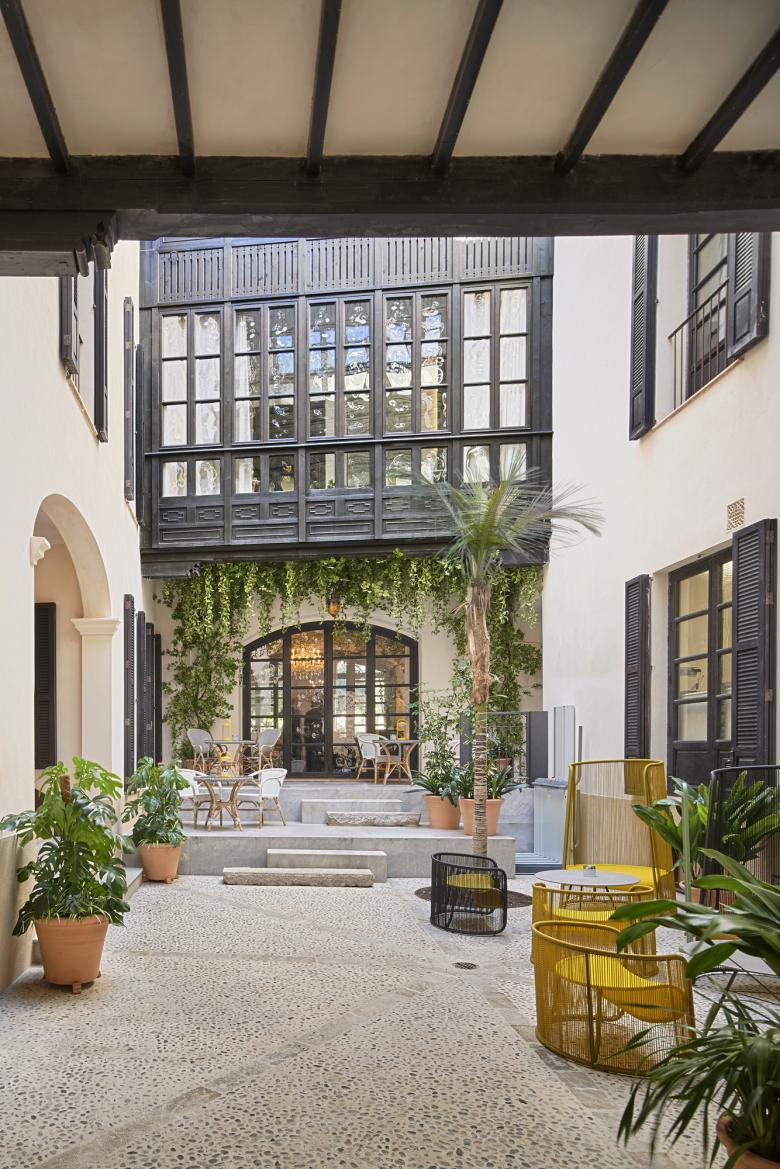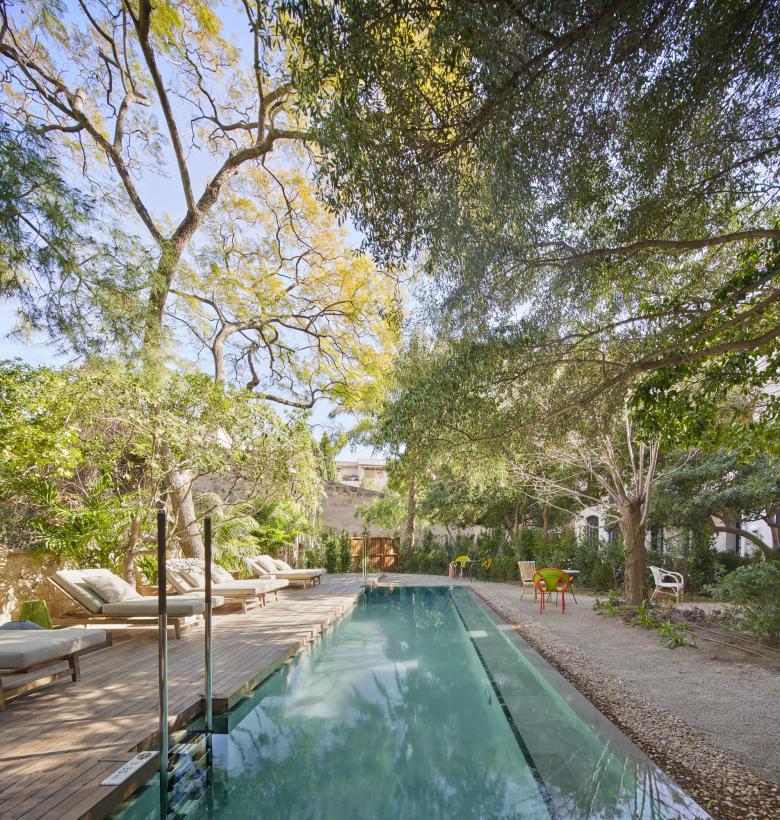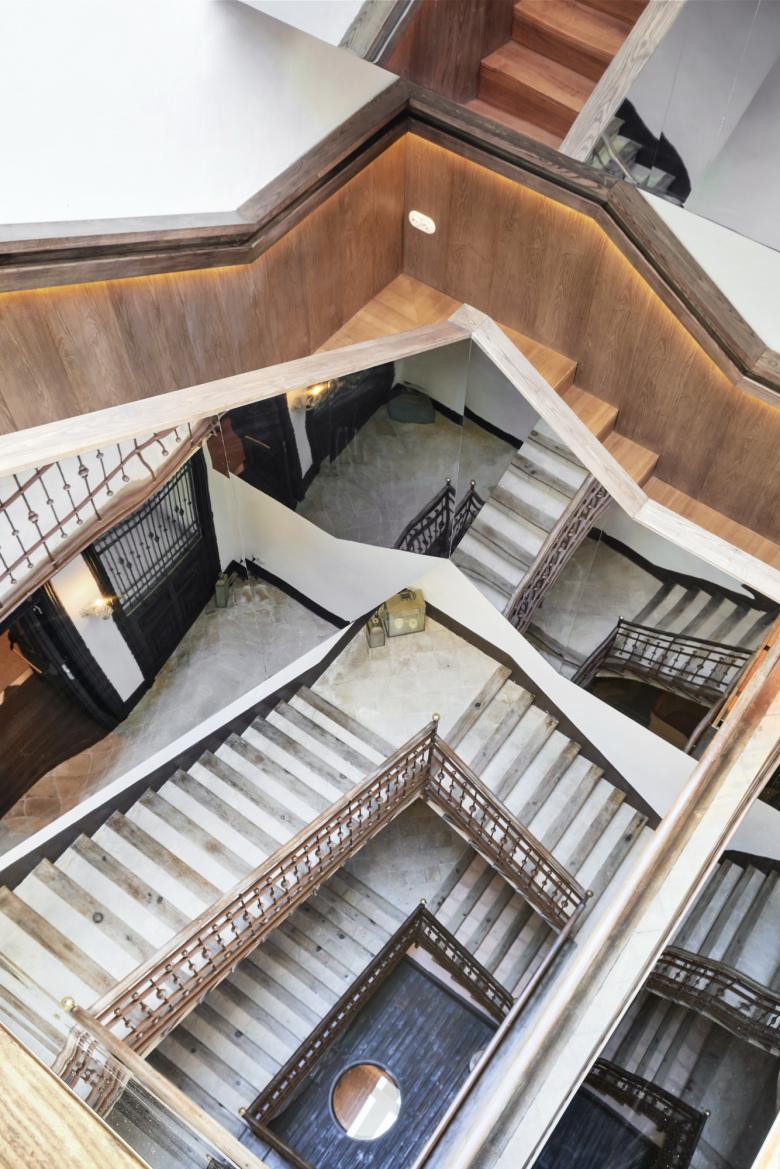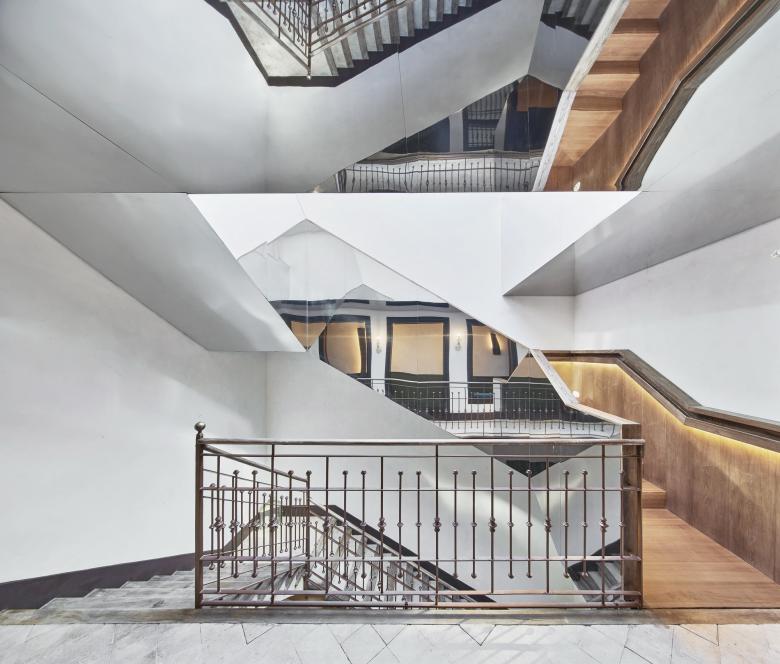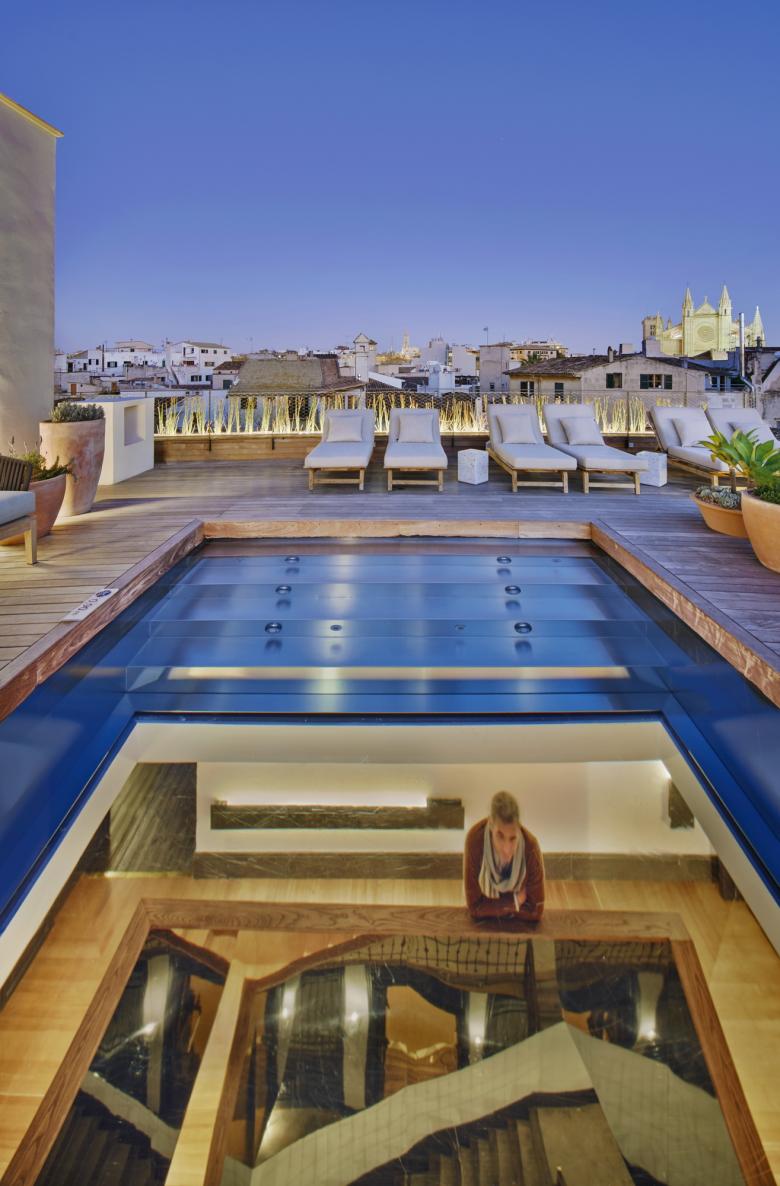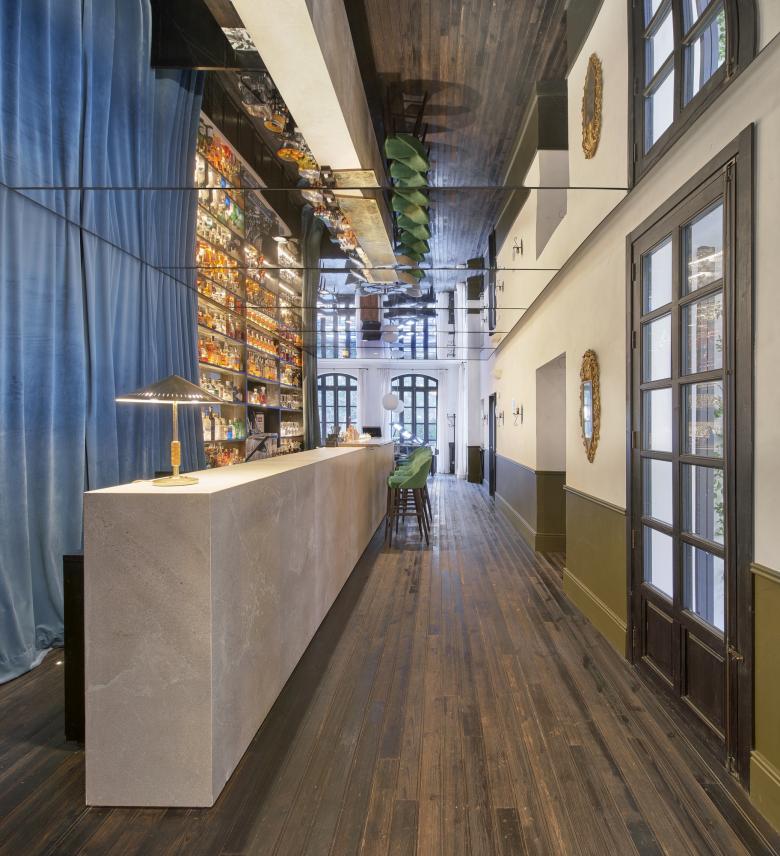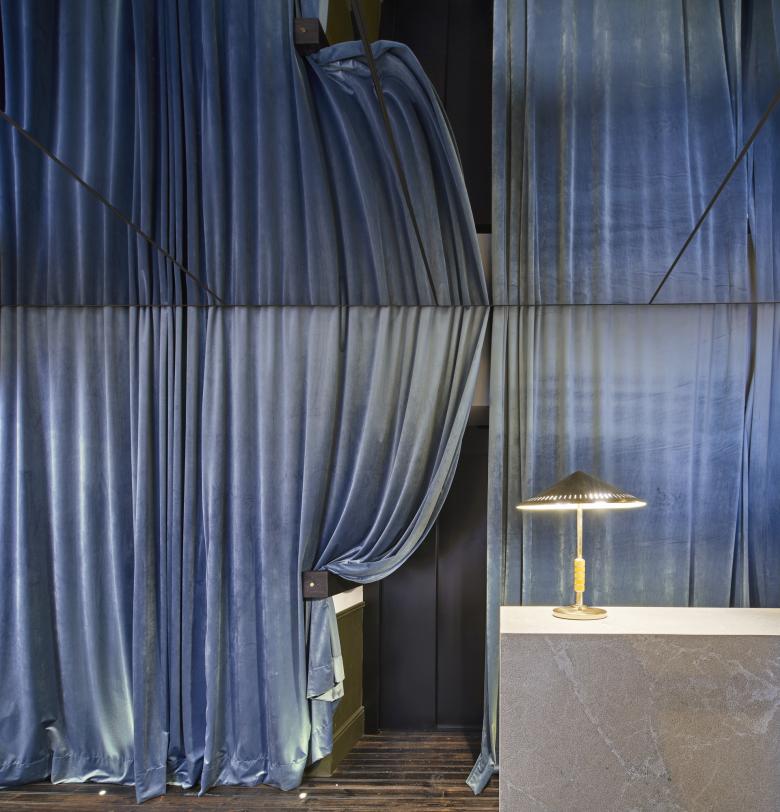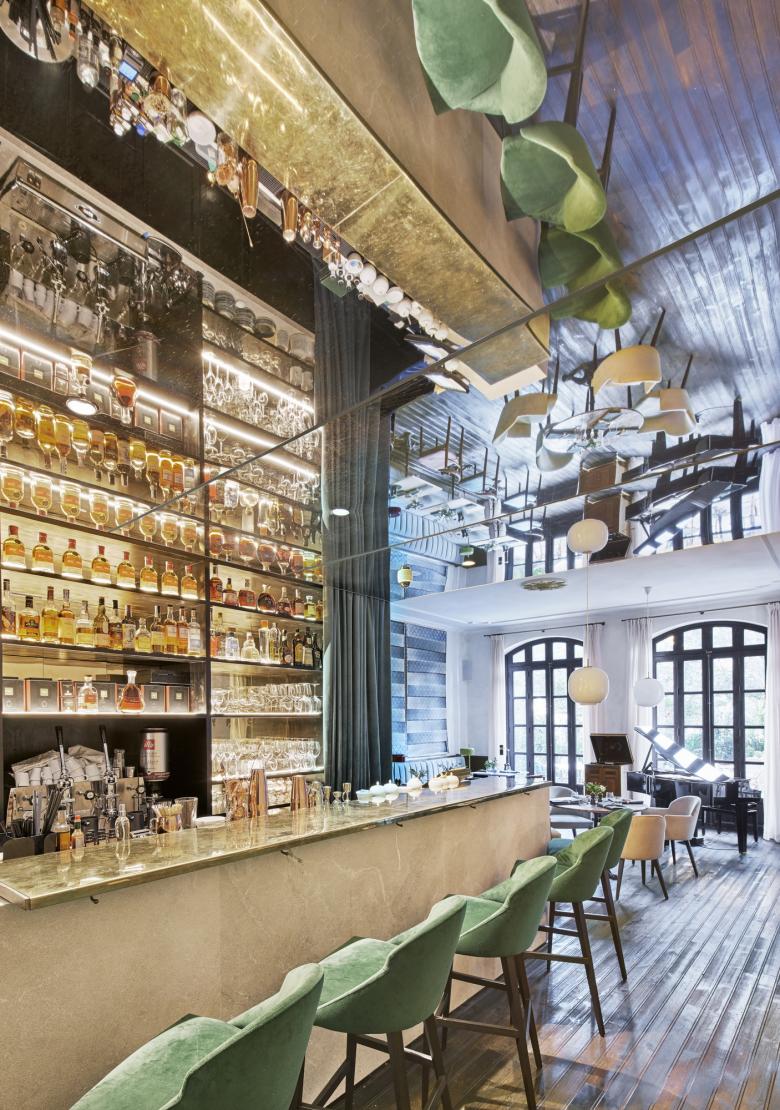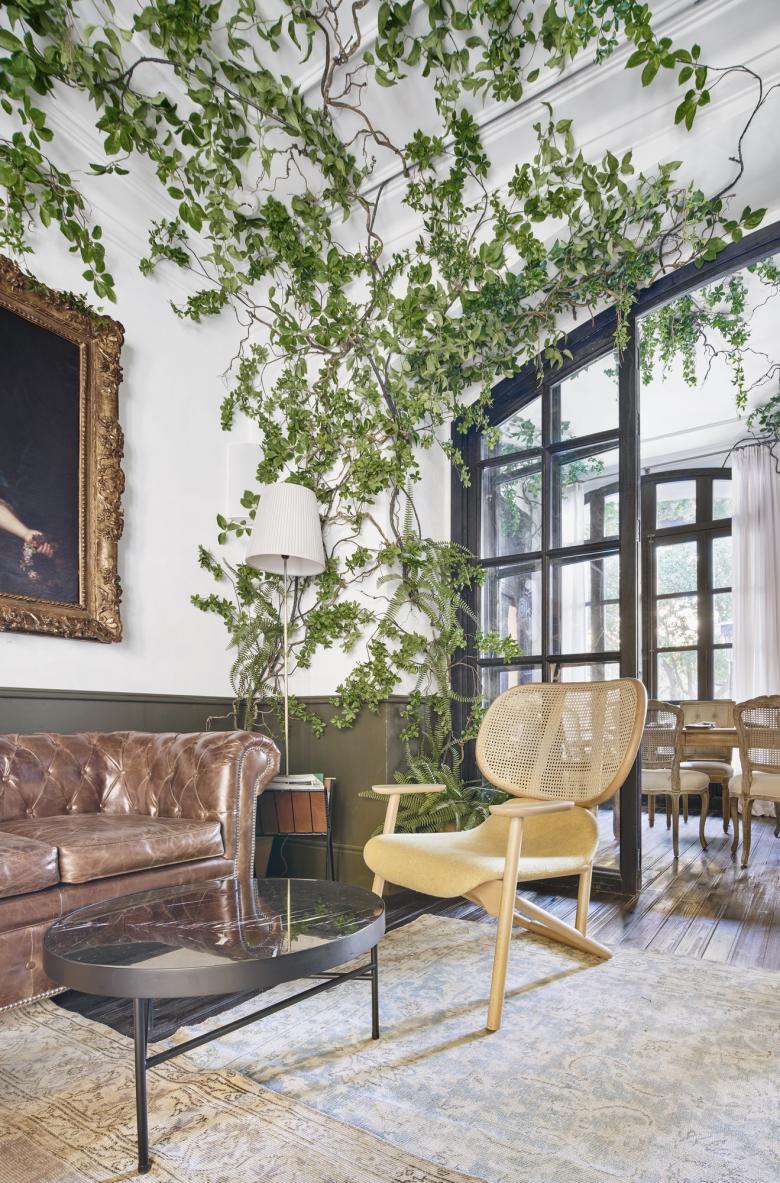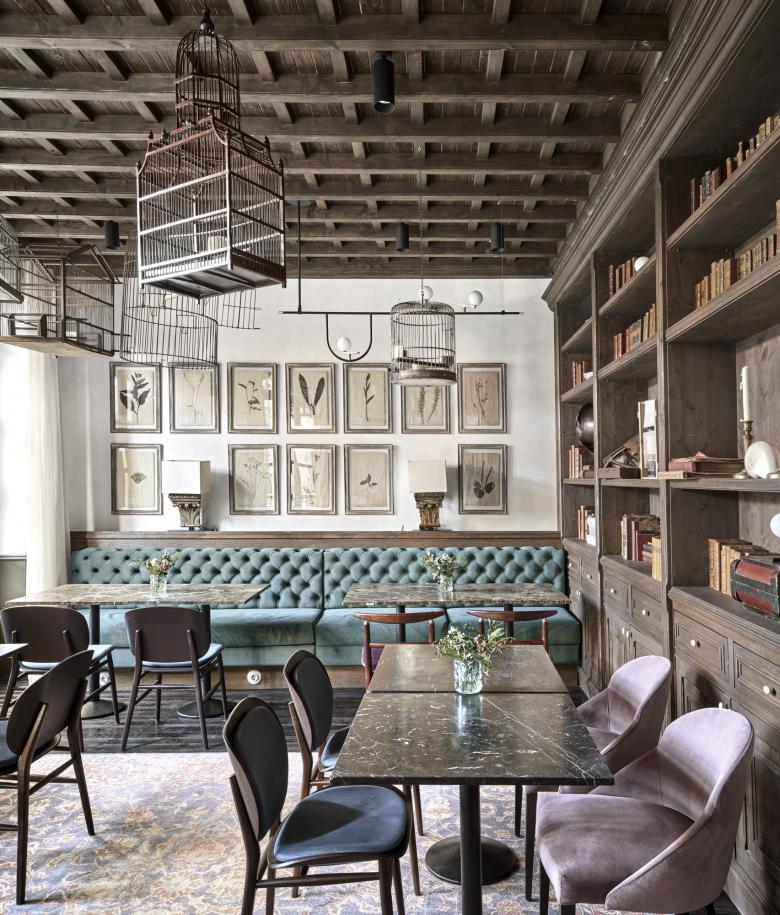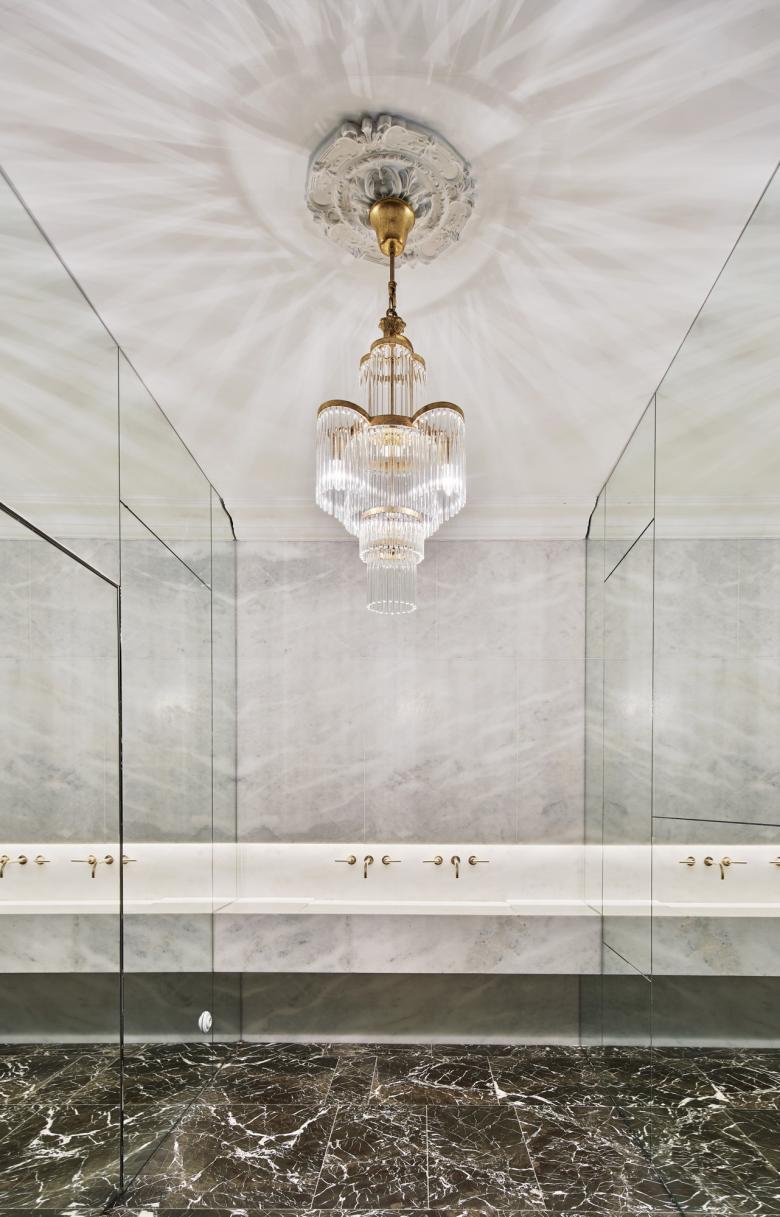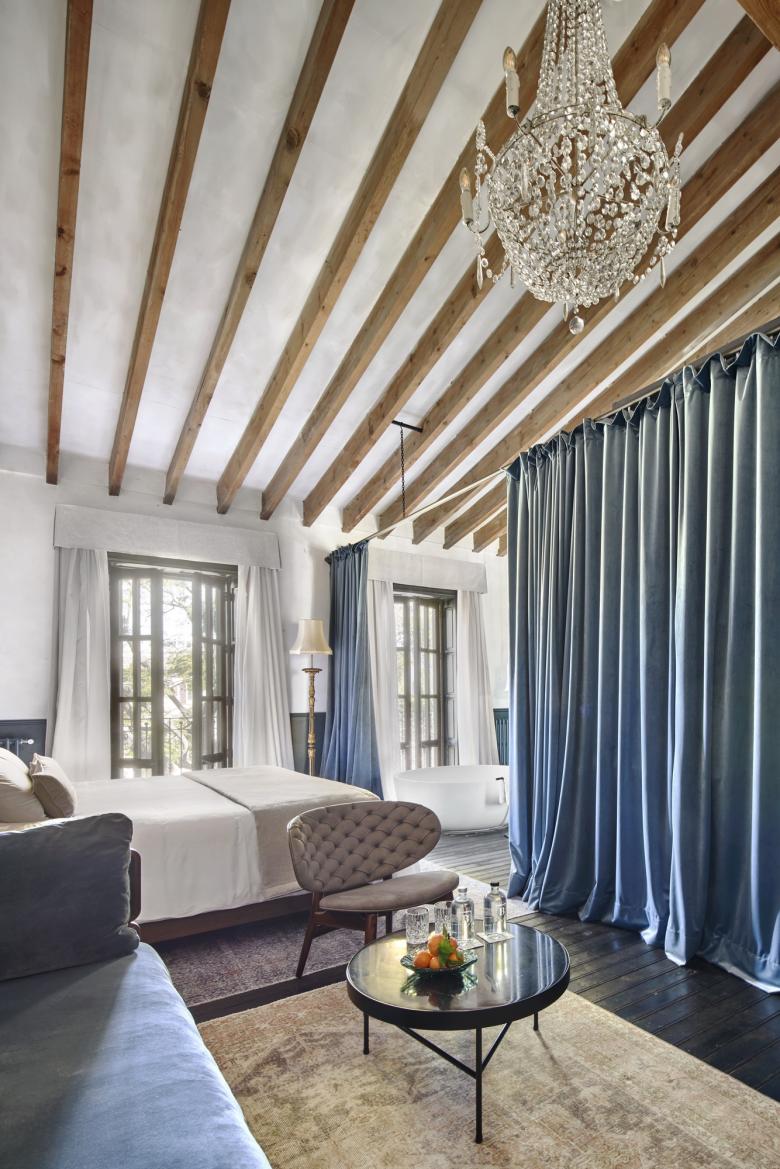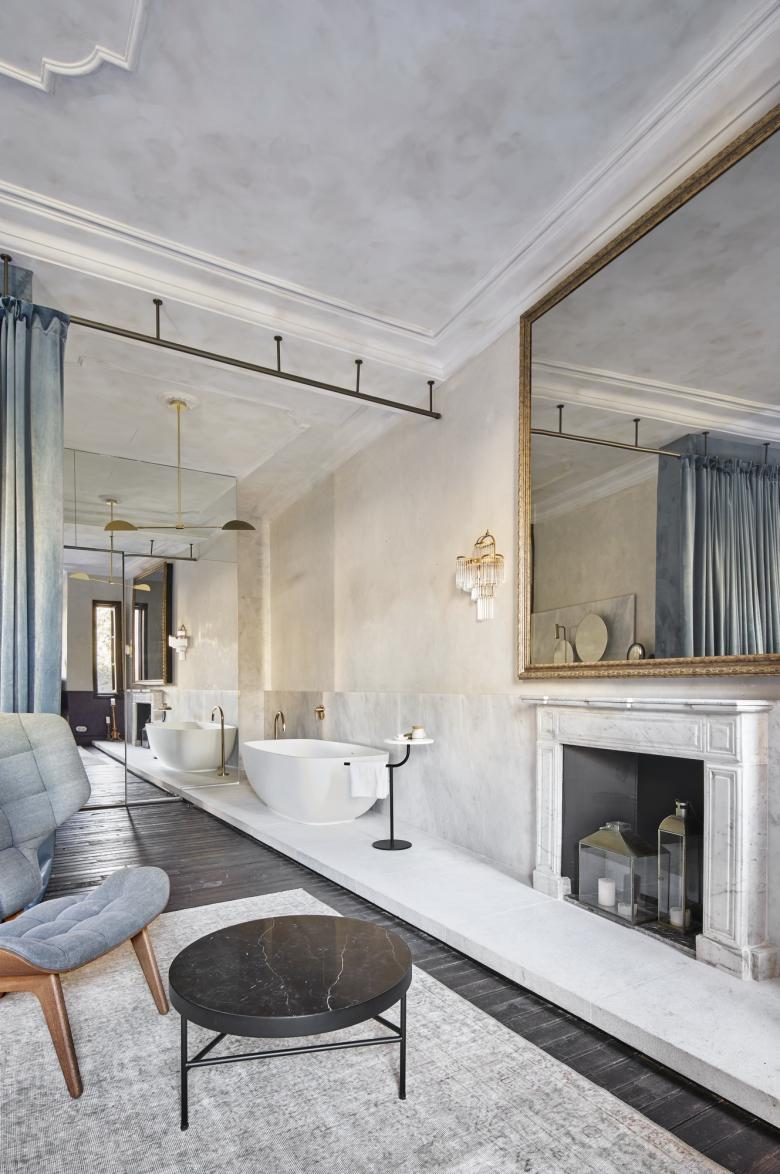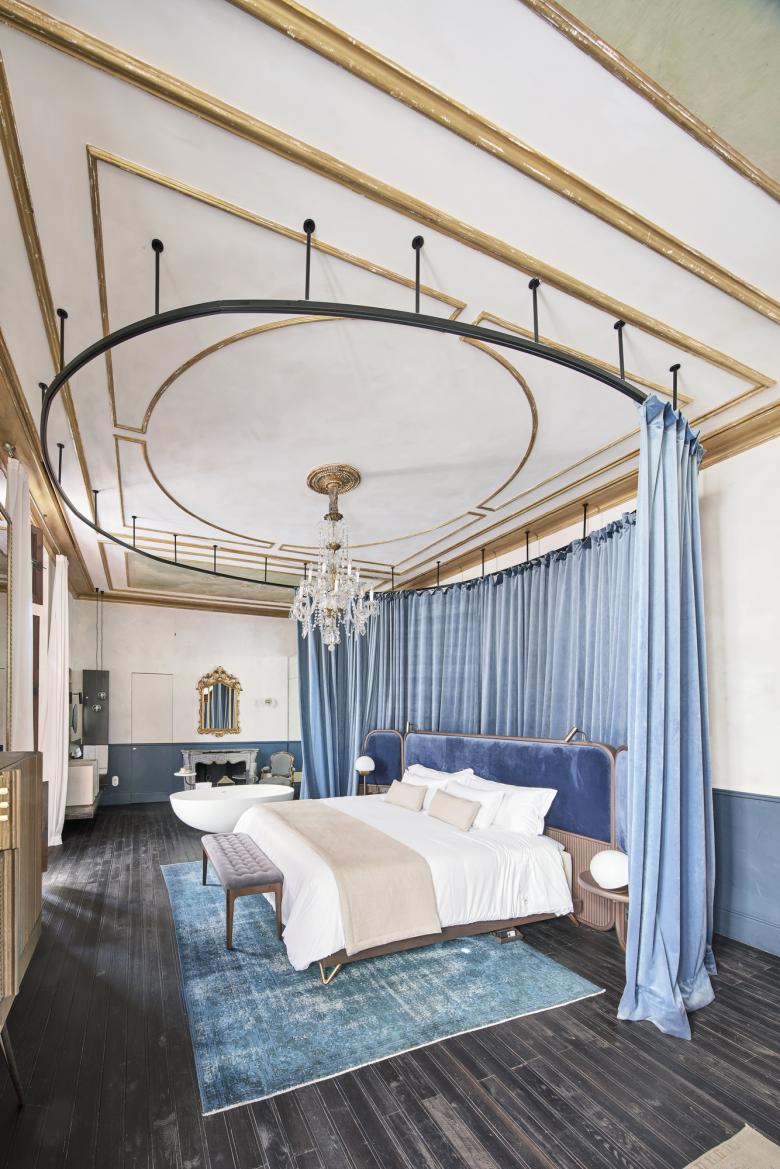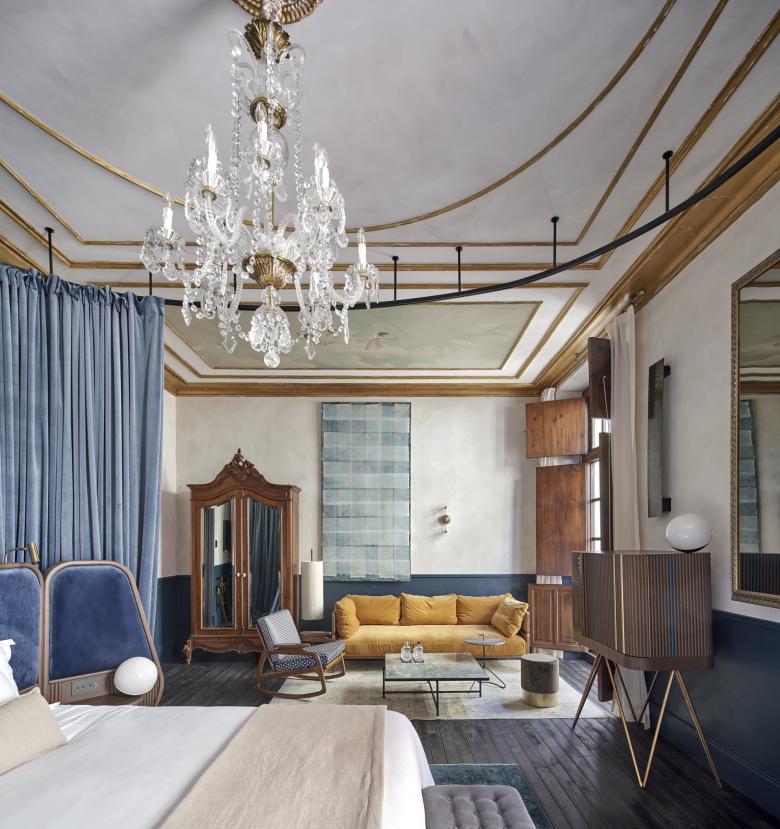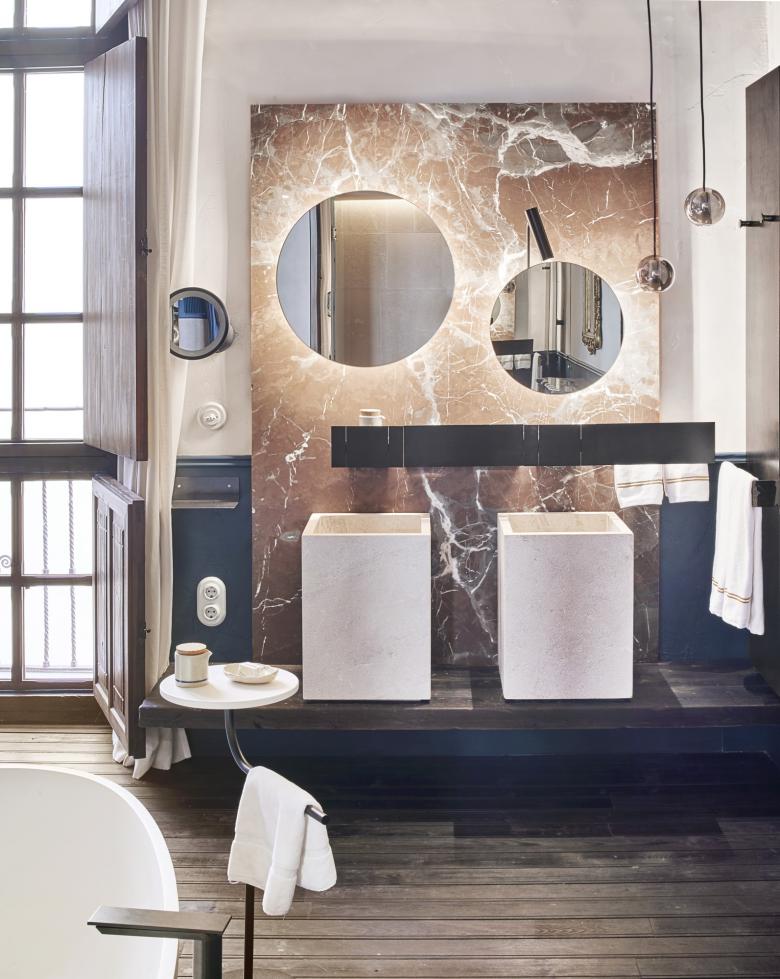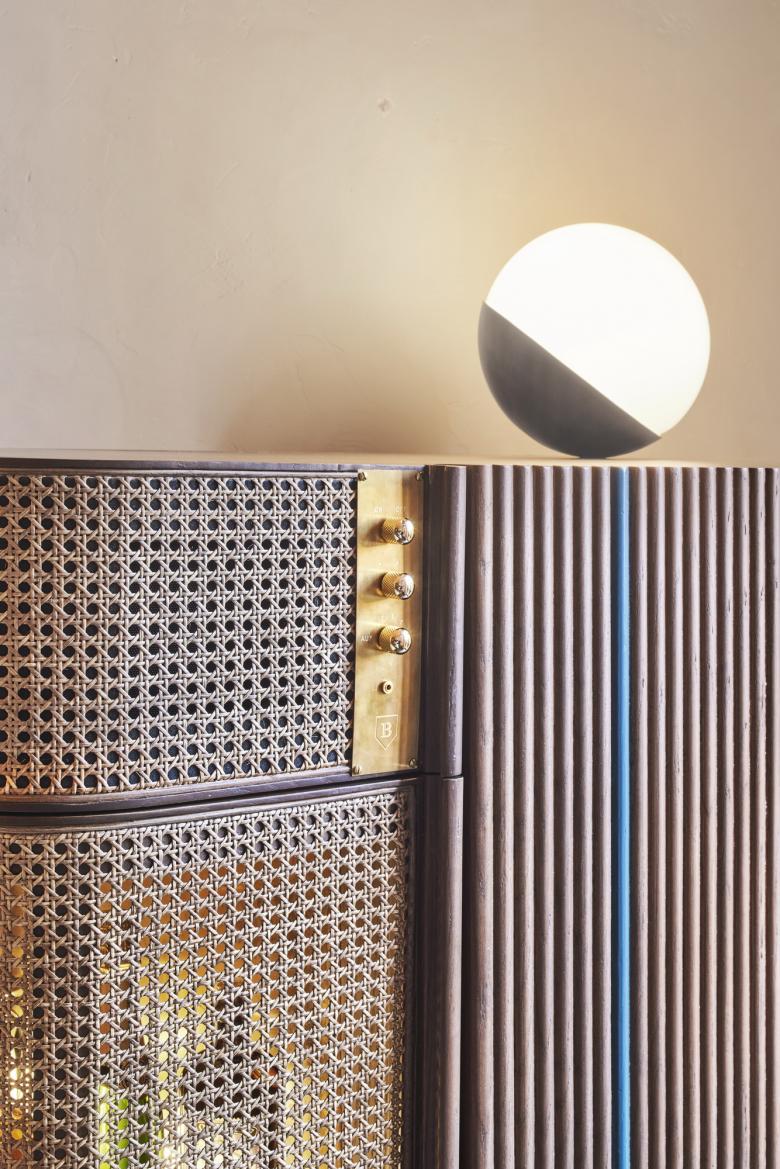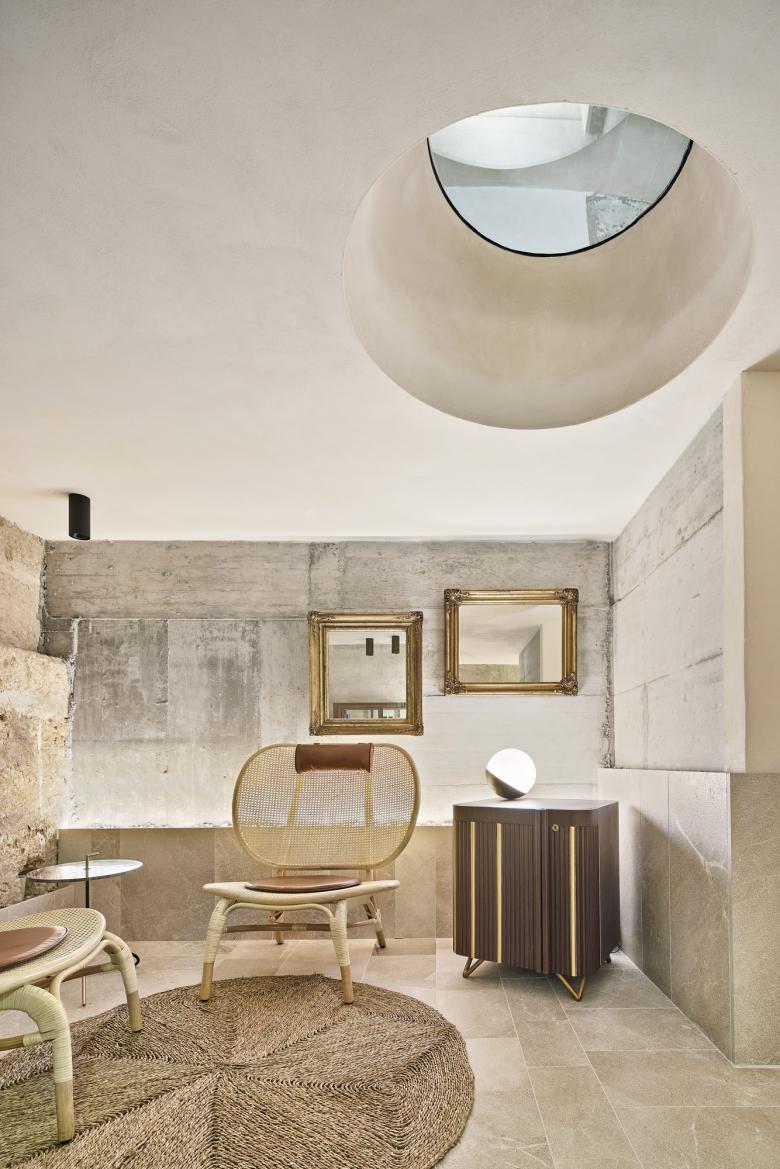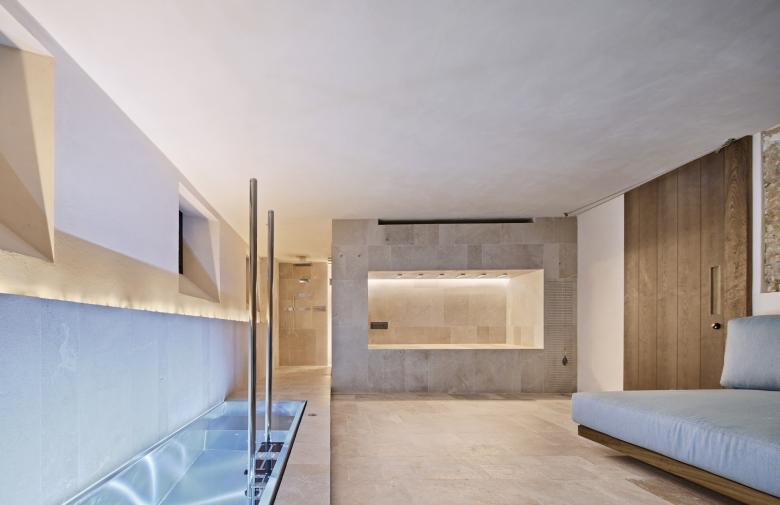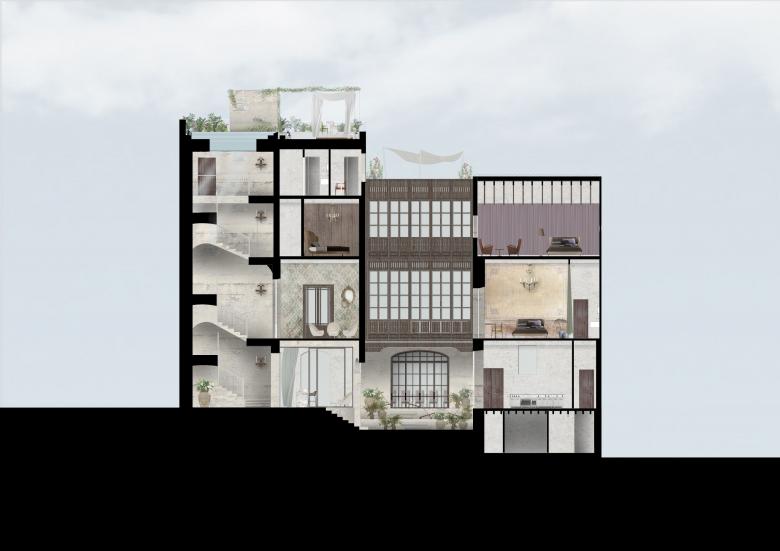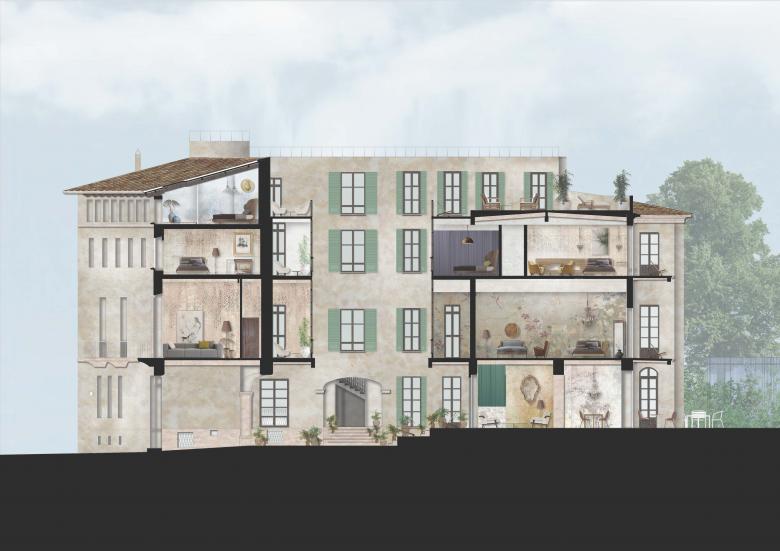Can Bordoy Hotel
Back to Projects list- Location
- Carrer del Forn de la Glòria, 14, 07012 Palma de Mallorca, Spain
- Year
- 2019
- Client
- Mikael Hall
- Structure engineer
- Hima Estructuras
- MEP Engineering
- Ingenio Consultores
- Landscape
- Salva Cañís (master gardener), OHLAB (landscape masterplan)
- Acoustical
- Tafor Consulting
- Archaeologist
- Elvira González
- Commissioned Art work
- Pedro Olive
- Graphic Design
- Studio Roses
Can Bordoy -Grand House & Garden- is a small 24 room hotel with a magnificent garden, swimming pool, spa and panoramic terrace, located in La Lonja neighborhood, the heart of the historic center of Palma de Mallorca. It is a complete renovation of a 2,500 m2 abandoned building that had been heavily modified throughout its more than 500 years of history. Can Bordoy has been envisioned and developed by businessman Mikael Hall and his family. The architecture and interior design have been carried out by OHLAB, an office directed by the architects Paloma Hernaiz and Jaime Oliver.
One of the most distinctive elements of the property is its garden, not only because of its but because of the richness and antiquity of the existing vegetation. One of the project’s most important interventions has been opening the doors of the garden, until now unknown by the vast majority, to the city and giving it visibility from the entrance courtyard and from the street.
The proposed programme is intended to evoke the experience of visiting a house more than a hotel. Therefore, rather than being at a hotel reception, the clients meet at the entrance hall of the house, instead of a restaurant we find a residential dining room, the rooms and living rooms are like those you would find in an old house, and so on.
The project carefully preserves the romantic and decadent atmosphere found in the building and is deliberately contrasted with interventions and elements from different epochs. The project carried out by OHLAB is a respectful intervention, maintaining the traces of the past and avoiding a false recovery of a glorious past that the house has never had.
The OHLAB team was inspired by the principles of the traditional Japanese technique of Kintsugi – the art of repairing broken antique porcelain with a precious material, such as gold dust, and thus obtaining a repaired piece that does not hide the fracture, but shows it and celebrates it and whose result is a piece that may have even more value than the ceramic before breaking. The architects have sought a project that does not pretend to hide the heterodox eclecticism of the existing building, but instead conciliates and celebrates the different layers of history and clearly highlights the new interventions that have been necessary to give the house its new use.
A series of architectural strategies were designed and developed throughout the building as a collection of distinctive contemporary interventions in dialogue with the existing building. Large velvet curtains disguise the new bathrooms in the rooms creating a scenography where the bathroom happens to be the new set; instead of hiding this new element, its use is celebrated. On the ground floor a green corridor of vegetation invades the dining rooms connecting the garden with the courtyard and the street. In the main staircase, the skylight is flooded with water becoming a small pool with a transparent bottom that creates a play of light through the water, flooding the staircase with caustic reflections. These are some of the strategies that make possible the new use of the house and the dialogue with the building’s history, but it is necessary to visit the building to discover them and the connections established between them.
The furniture is a very important part of the project. The eclecticism of the architecture is reflected in the selection of furniture with pieces from very different eras and origins. Antiquarian pieces coexist with contemporary furniture carefully selected and with bespoke furniture designed by OHLAB specifically for Can Bordoy. Among the bespoke furniture designed by OHLAB, a collection of beds and bars for all rooms stand out.
Classic antique paintings from the XVII to the XIX century from the owner’s private collection hang throughout the house combined with a collection created by the artist Pedro Oliver ad-hoc for Can Bordoy where the artist plays with personal and determined strokes superimposed on classic patterns reminiscent of the history of the house.
Lastly, on the building foundations we find the Spa Experience. Surrounded by original stone walls from the XII century, brutalist structural reinforcements of exposed concrete, and delicate natural stone finishes, a journey of water sensations begins at different temperatures following the millenary Mediterranean bathing culture.
Architecture and Interior Design: OHLAB / Paloma Hernaiz and Jaime Oliver
OHLAB team: Paloma Hernaiz and Jaime Oliver with Rebeca Lavín, Silvia Morais, Laura Colomer, Amaia Barazar, Manuela Sánchez, Lara Ortega, Eusebiu Spac, Tomislav Konjevod, Eleni Oikonomaki, Katerina Kotsampasi, Nikola Kozhuharov, Stela Dineva, Rosa Fuentes, Joana Aguilera, Amalia Stavropoulou.
Project Management: OHLAB, Jorge Ramón (building engineer), Luis Rivas (building engineer).
Building engineers and Quantity surveyors: Jorge Ramón and Luis Rivas. Team: Isabel Sánchez, Jaume Miralles.
